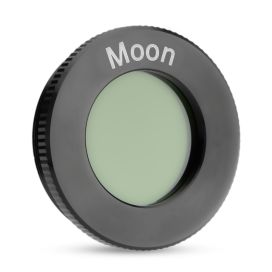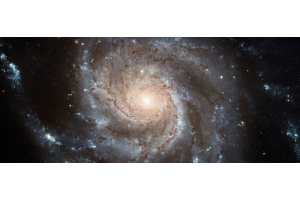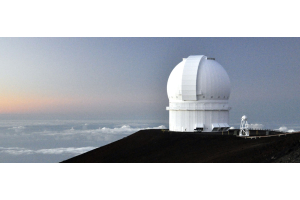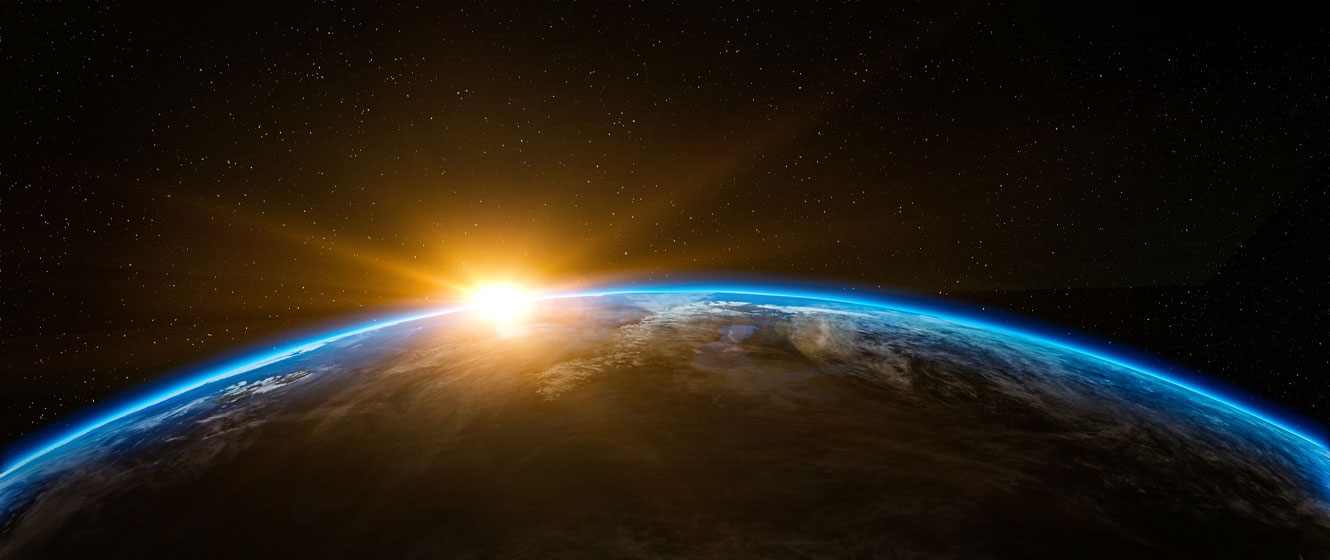
Many of us have been hearing about “outer space” for most of our lives. Whether it’s in books, magazines, or science fiction movies and TV shows, outer space has fired our imaginations for decades - and yet the concept has always remained vague and ill-defined. “Outer space” seemed to be just space in general. So what is it? Is there a true definition of what outer space is? What’s out there? And can we go there?
What is Outer Space?
For all intents and purposes, outer space is basically what lies beyond the Earth’s atmosphere. For example, the Sun, planets, stars, and galaxies - all these things are in outer space.
If there’s an outer space, then it stands to reason that there must also be an inner space. This is defined as being the area between the Earth’s surface and the edge of the Earth’s atmosphere.
However, the Earth’s atmosphere doesn’t suddenly stop once it reaches a certain point. As you might imagine, it surrounds the Earth but gradually dissipates with distance. The reality is that the Earth’s atmosphere extends as far as nearly 400,000 miles (over 600,000 kilometers) out into space.
That’s roughly 50 times the Earth’s diameter and well past the Moon. That said, the atmosphere is so incredibly tenuous at that distance that it wasn’t detected until the end of the 20th century. The Solar and Heliospheric Observatory (SOHO) satellite was the first to detect it, but it was only when scientists re-analyzed the data that the discovery was made.
So does this mean that the Moon, the International Space Station, and thousands of satellites all orbit the Earth in inner space, and not outer space? If we were to stick to the definition of “inner space” then yes, but there’s a broader definition of space we need to consider.
Where Does Space Begin?
Since we can’t say the Earth’s atmosphere comes to a definite end as such, we need to set a boundary of our own to determine where space begins. Otherwise, how can we say if a person has been to space if we don’t know where space begins?
Unfortunately, it probably comes as no surprise to learn that no one can agree on this. It really depends on whom you ask and in what country they’re living - not to mention which organization they’re working for.
Generally speaking, it’s agreed that space begins where orbital dynamics have a greater influence than the aerodynamics of the atmosphere. For example, if you’re flying in an aircraft at 35,000 feet, then you’re subject to the aerodynamics of the atmosphere. But if you’re orbiting the Earth in a spacecraft, your flight path is determined by orbital dynamics, as the atmosphere is too thin to have any influence.
So far, so good. In 1957, the Hungarian physicist Theodore von Kármán calculated that orbital dynamics took over at a height of about 50 miles above sea level. That’s about 80 kilometers, or more than 250,000 feet - considerably higher than the airplane you use to go on vacation!
Since then, that figure has been adjusted to 62 miles, the equivalent of 100 kilometers above sea level. Known as the Kármán Line, this is the definition adopted by the Fédération Aéronautique Internationale (FAI), the organization that maintains records of aeronautical activities.
Originally founded to regulate and advance the science and sport of flying, the FAI later took an interest in spaceflight. As such, it drew the Kármán Line at 100 kilometers as a convenient boundary to separate air from space.
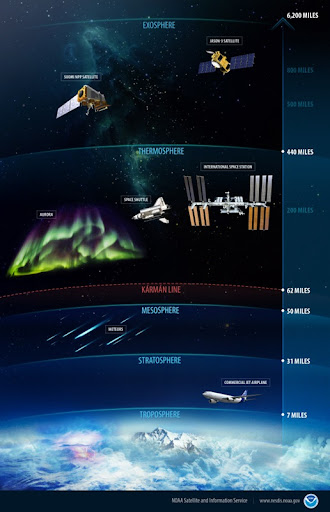
Image Credit: NOAA
Most countries and organizations recognize the 100-kilometer boundary, but there are a few exceptions. For example, the US Air Force, the Federation Aviation Authority, the National Oceanic and Atmospheric Administration (NOAA), and NASA all use 50 miles (80 kilometers). (Just to complicate things further, NASA’s Mission Control uses a height of 76 miles, the equivalent of 122 kilometers.)
Are We There Yet?
With different countries and organizations adopting different definitions of the boundary, it’s only natural to be confused about whether pilots and astronauts are in inner space, outer space, space in general or simply flying through the atmosphere.
Since the FAI maintains the records for flight, and since most countries accept that the edge of space lies at 62 miles (100 kilometers) above sea level, it seems reasonable to accept this as the boundary. Any person flying above that altitude can be said to be traveling through space - and is, therefore, an astronaut.
Beyond that, any person traveling within 400,000 miles (643,000 kilometers) could be said to be moving through inner space, whereas anyone going further could be traveling through outer space.
This being the case, since we’ve only walked on the Earth and the Moon, we have yet to send anyone to outer space. We have, however, sent space probes to the planets and beyond, with Voyager 1 being the most distant. Launched in September 1977, it’s now more than 14.5 billion miles (23.4 billion kilometers) away, or roughly 156x the distance of the Earth from the Sun.
While that might seem like a lot, that’s next to nothing when it comes to the exploration of outer space. Proxima Centauri, the nearest star to the Sun, is 4.25 light-years away, or 268,775x the distance of the Earth from the Sun. In other words, Voyager 1 has barely made it 0.06% of the way there.
Outer space is like a huge, limitless ocean just waiting to be explored, and whether we use robotic space probes or go there ourselves, it appears the road to the stars will certainly be a long one.

Learn More
Interested in learning more about the universe? Not sure where to begin? Check out our Astronomy Hub!
This Article was Last Updated on 07/26/2023



